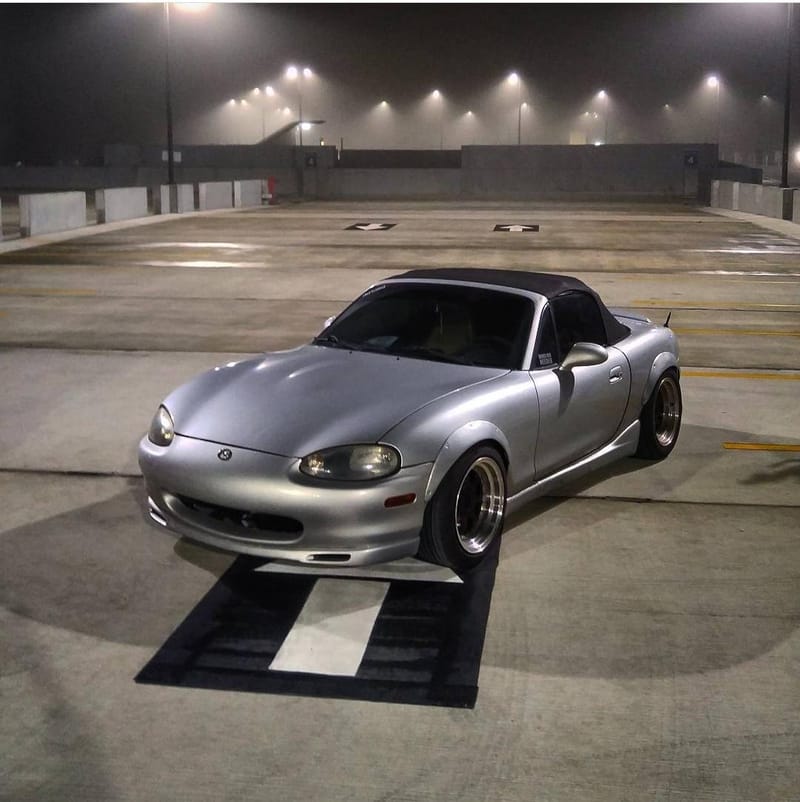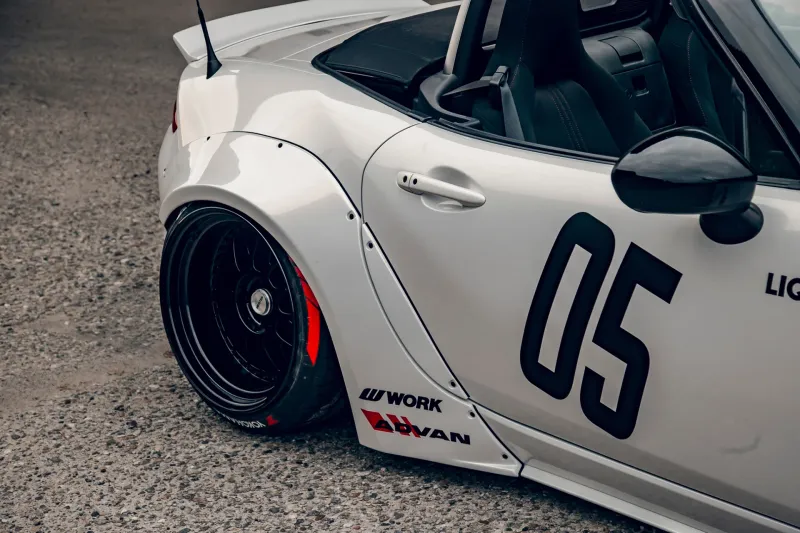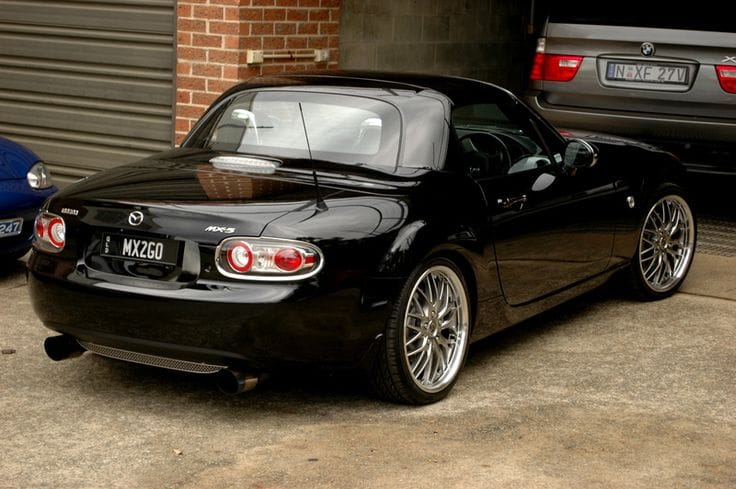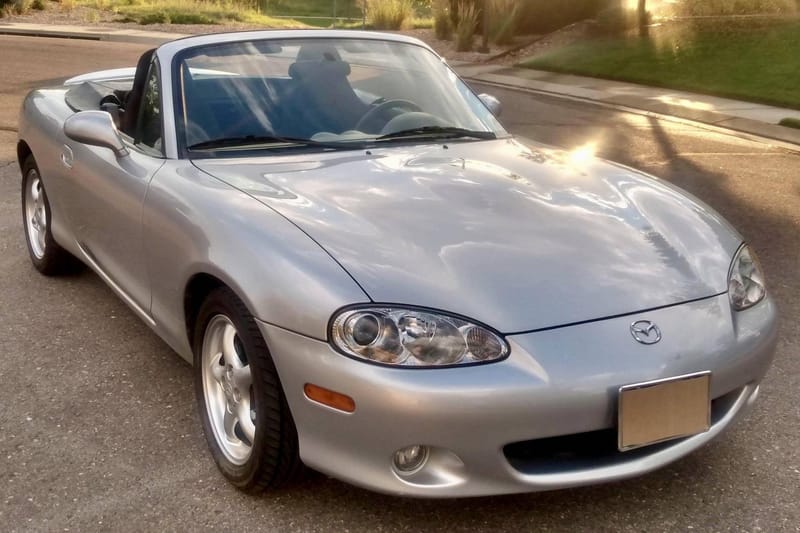The Ultimate Miata Buyer’s Checklist (NA)
New to Miatas? The NA Miata is the perfect entry point. With pop-up headlights, perfect balance, and simple mechanics, it’s fun, affordable, and easy to maintain. Add a huge aftermarket scene and a welcoming community, and you’ve got a timeless classic that’s as lovable today as ever.
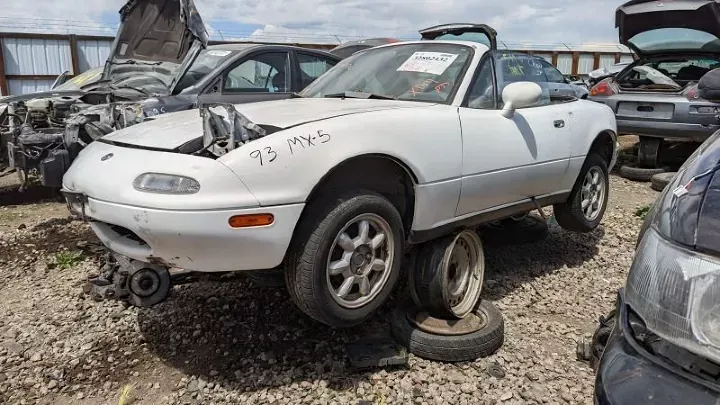
If you’ve been newly drawn into the world of the Miatas, don’t worry, you’re in good company. Mazda’s first-generation Miata, often referred to by its “NA” chassis code, was unveiled as a 1990 model and quickly won hearts across the globe. The formula is simple but effective: a light chassis, near-50-50 weight balance, straightforward mechanicals, and, of course, pop-up headlights that give the car its iconic, playful personality.
What makes the NA Miata so appealing? First off, it’s remarkably accessible, both in terms of purchase price and upkeep. Compared to many other classic sports cars, it costs less to buy and maintain, especially if you stay on top of routine maintenance. There’s also an enormous aftermarket scene, offering every conceivable upgrade from suspension kits to engine swaps. The design has aged gracefully, still looking fresh decades later, and the Miata community itself is famously friendly, plenty of clubs, forums, and local meet-ups to help you find your feet and share the joy.
NA Miata Model-Year Breakdown
Although all NA Miatas look similar at first glance, each year from 1990 to 1997 brought its own set of tweaks. These small (and sometimes big) changes can affect what you’ll pay, the performance you’ll get, and how desirable the car will be in the long run. The earliest 1990 Miatas came exclusively with a 1.6-liter engine and a five-speed manual transmission; many of them had a quirk known as the “short-nose crank,” which can lead to trouble if improperly serviced. By 1991, Mazda introduced an automatic transmission, offered ABS in higher trims, and began switching from the short-nose to a more durable long-nose crank design. That year also saw the beloved British Racing Green special edition, complete with a tan interior and wooden Nardi details!

As the early ’90s progressed, the car’s feature list grew. By 1992, an interior trunk release became standard, and fresh colors like Sunburst Yellow joined the lineup. In 1993, leather seats, upgraded audio, and limited editions (like the Black with Red interior “LE”) kept enthusiasts on their toes. Then 1994 ushered in the biggest overhaul: the engine grew to 1.8 liters, the brakes and differential got beefed up, and new packages, like the R-Package and the luxurious M-Edition, entered the picture. By 1995, Mazda allowed more mixing and matching of features instead of rigid A/B/C packages, and the M-Edition got even more exclusive paint and wheels. The final years, 1996 and 1997, saw emissions updates (switch to OBD-II), limited M-Edition runs with unique colors, and extremely rare R-Packages. The 1997 STO (Special Touring Option) and a handful of ultra-limited production runs closed out the NA era, leaving enthusiasts with a wealth of different trims and special editions to chase after.
Engine Checklist
Under the hood, NA Miatas are famously resilient, but there are a few recurring points to look out for. First, decide whether you want a 1.6-liter (1990–1993) or 1.8-liter (1994–1997). The horsepower gap isn’t huge, but 1.8 cars benefit from larger brakes and sturdier differentials. If you’re considering an early 1.6, watch for the short-nose crank by checking if the pulley has four slots (short-nose) or eight slots (long-nose). A poorly handled short-nose crank can lead to engine troubles, so it’s good to see evidence of proper maintenance.

The choice of differential also matters. Viscous LSDs were common in early 1.6 cars but lose effectiveness as they age. From 1994 onward, many NA Miatas came with a more robust Torsen LSD, especially on R-Packages and certain special editions. Transmission-wise, the five-speed manual is the enthusiast favorite, offering a crisp and direct feel. Automatics arrived in 1991, but they’re typically considered less engaging. Beyond that, be sure to inspect the cooling system (particularly the plastic radiator tanks, which can crack), check for oil leaks (commonly at the valve cover gasket and cam angle sensor O-ring), and give the suspension a once-over. Most NA Miatas could be on their original shocks, meaning it may be time for an upgrade.
Body & Chassis Checklist
Rust can be the deal-breaker in an older Miata. Focus on areas like the rocker panels and rear quarter panels, these spots collect moisture, especially if the convertible-top drains get clogged. It’s wise to bring a flashlight and examine the wheel wells and subframe rails for corrosion or questionable repair work. The windshield frame and cowl region can also hide rust if water has seeped under the seal.
Don’t forget to check the condition of the convertible top. Look for tears, worn seals, and a cloudy or cracked rear window. Run some water over the top to see if it leaks, and check that the drains (located behind the seats) aren’t clogged. A neglected soft top can lead to bigger problems than just wet seats, so it’s best to know what you’re dealing with.

Interior & Electrical Checklist
Inside, an NA Miata is straightforward but can show wear in a few spots. Leather seats in special trims like the C-Package and M-Edition may be cracked or split by now, while the cloth seats in base models tend to last a bit better. Have a look under the carpet for any signs of moisture or rust on the floor pans. Early 1.6 cars generally had only a driver’s airbag, with the passenger’s airbag coming in later 1.8 models. If you see an airbag light blinking, that’s a sign something’s wrong with the sensor or wiring.
Power windows can slow down or fail entirely, so test both sides. The pop-up headlights should move up and down evenly, if one side struggles or “winks,” you might be looking at a faulty motor or linkage. Also, pay attention to whether the car has an interior trunk release (standard from late 1991 onward), since some owners really prefer that convenience. If you’re a music fan, check the headrest speakers in B-Package or higher trims, as their foam can deteriorate over time.
Unique Trims, Packages & Rare Colors
If you’re into collecting or simply want a Miata that stands out, the NA generation had plenty of special editions. The M-Edition, offered from 1994 to 1997, boasted unique paint colors each year, upgraded interiors, LSD, and special badging. The R-Package, also from ’94 to ’97, catered to performance enthusiasts with Bilstein shocks, front and rear spoilers, and an LSD for better traction on track or twisty roads. R-Package cars are especially rare in the final NA years.
Earlier limited editions include the 1991 British Racing Green with its tan interior, the 1992-only Sunburst Yellow, and the 1993 Black-and-Red interior LE. By 1997, you could opt for the STO (Special Touring Option) in Twilight Blue or the M-Edition in Marina Green Mica, both relatively scarce. If you want something extremely unusual, look into combinations like Laguna Blue with a tan interior (only a few hundred existed), or later-year R-Package models where production figures dipped into double digits.

Aftermarket & Modifications
It’s almost harder to find a completely stock NA Miata these days than one with some level of modification. Many owners upgrade the suspension first, often adding coilovers from well-regarded brands like Flyin’ Miata or Tein. Roll bars (like those from Hard Dog) are common additions for safety and chassis rigidity, especially if the car sees occasional track days. Engine mods might include a cold-air intake, header, and exhaust; be sure these are name-brand parts if you value reliability. Forced induction via turbo or supercharger is also possible, but it’s a big leap, ask about engine management and supporting mods before signing anything.
Wheels are another popular mod. The original 14-inch wheels are fine, but 15-inch upgrades often offer a better tire selection. Authentic BBS wheels from certain special editions can be worth a premium. As for interior changes, check if the steering wheel still has an airbag (if that matters in your jurisdiction), and inspect the quality of any aftermarket seats, shift knobs, or gauge clusters. Tasteful, well-done modifications can be a bonus, while poorly executed or cheap mods can indicate a future headache.
Rust & Common Problems
Rust is far and away the biggest enemy of older Miatas, so thorough inspection can’t be overstated. Rocker panels and wheel arches are the usual suspects, along with exhaust systems that might have suffered from salt and moisture over the years. The airbag system can throw error codes if sensors or wiring degrade, and oil leaks can crop up at the valve cover gasket, cam angle sensor O-ring, or crank seals. These leaks are often not catastrophic but can make a mess and slowly drain your wallet if ignored.
Final “Take-With-You” Buyer’s Checklist
When you head out to see a potential NA Miata in person, keep a mental or physical list handy to ensure you don’t miss any key details. Confirm whether you’re dealing with the 1.6 or 1.8 engine and check if that early 1.6 has the short-nose crank. Keep a keen eye on rust, especially around the rockers and the rear arches. Examine the top’s condition and make sure the drains are clear. Look under the carpet for hidden floor pan rust or dampness. Make a point of testing the pop-up headlights, the power accessories, and listening for any odd noises during the test drive, clutch chatter, grinding gears, suspension clunks, or differential whine can be signs of looming repairs.
If the car has been modified, figure out whether the parts are reputable and professionally installed or just cheap eBay specials. Ask to see maintenance records, especially for timing belt and water pump replacements, fluid changes, and any major engine work. Finally, consider how a special edition, rare paint job, or LSD might add to the price. Decide if exclusivity matters to you before reaching for your wallet.
The NA Miata isn’t just a cute little roadster; it’s a bona fide sports car with racing credentials, massive community support, and a driving experience that’s as pure as it gets. Whether you plan to build a track star, a weekend fun car, or an everyday driver that never stops making you smile, the NA Miata can do it all. Just remember to start with the right car by doing your homework and following a solid checklist.
Once you’ve found your dream example and taken it home, you’ll quickly discover why these cars have remained so beloved for so many years. The pop-up headlights alone are worth the entry fee. Enjoy every twisty road, open-air cruise, and forum deep dive, welcome to the wonderful world of the NA Miata!

